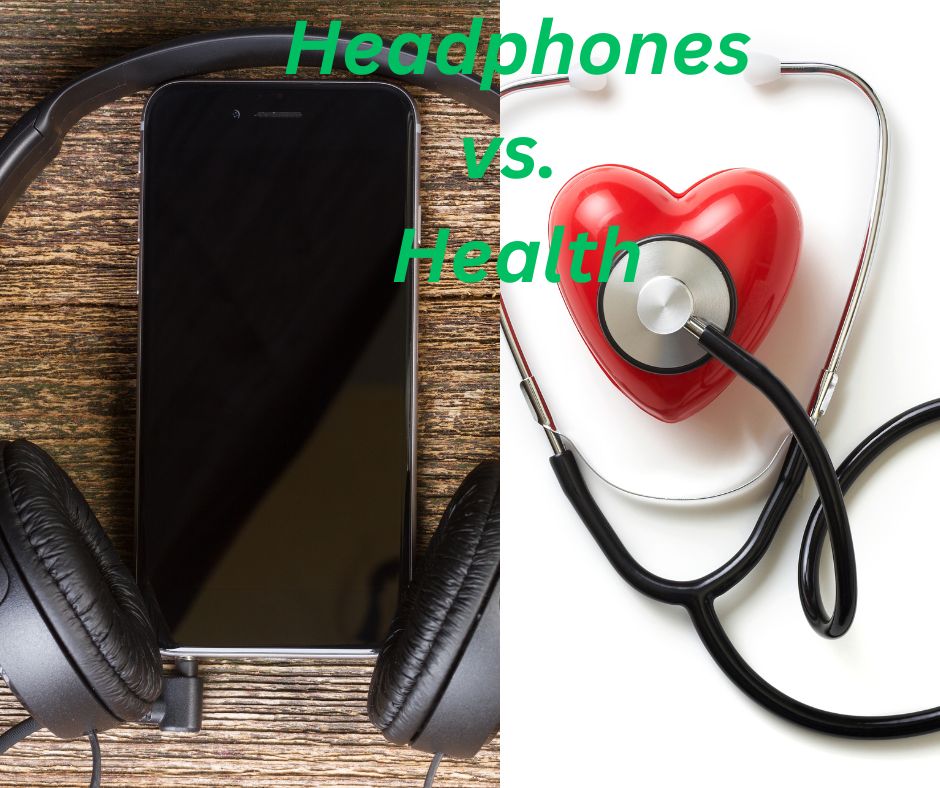Headphones vs Health
Striking the Right Balance between Audio Pleasure and Well-being

I. Introduction
In the modern era, headphones have become an essential accessory for numerous individuals, offering a personal and immersive audio experience. With the fast-paced nature of today’s world, they provide convenience and heightened audio enjoyment for various purposes, such as listening to music and podcasts or participating in virtual meetings. With the growing recognition of headphones, it’s essential to remember the effect they can have on our fitness. Striking a balance between taking part in our tune and prioritizing our well-being is of maximum significance in maintaining our attention to and popular health.
II. The Impact of Headphones on Hearing
Our ears are tricky organs accountable for capturing and processing sound. When sound enters the ear through headphones, it travels through the ear canal, inflicting the eardrum to vibrate. The auditory device then translates these vibrations into electrical signs, allowing us to understand sound.
It is crucial to word that prolonged and excessive use of headphones at high volumes could negatively affect one’s listening. Continued publicity of loud noises can harm the sensitive hair cells within the internal ear, which can bring about permanent hearing loss. Therefore, it is critical to be aware of the quantity stages when using headphones and to bear in mind the length of listening periods so that it will defend one’s hearing.
III. Understanding Noise-Induced Hearing Loss
Noise-prompted listening to loss (NIHL) occurs when the ears are exposed to high degrees of dangerous noise. Using headphones, especially in noisy environments, can greatly increase the chance of growing NIHL. In addition, being attentive to the song at most quantity, specifically for lengthy durations, can expedite listening to harm. Furthermore, the proximity of earbuds to the delicate eardrum can extend the impact of sound waves, doubtlessly main to greater severe damage. Therefore, you must discover the signs and symptoms of hearing loss and take suitable measures to protect your listening. It includes problems understanding conversations, ringing within the ears (tinnitus), or muffled sounds, and seeking expert assistance if wished.
IV. Tips for Preventing Hearing Damage from Headphones
Protecting our hearing while enjoying our favorite audio content is possible with some simple tips:
1. Set Safe Volume Levels:
Follow the “60/60 rule”: Limit the volume to 60% and listen for a maximum of 60 minutes per session.
Use volume-limiting features in some headphone models to prevent exceeding safe levels.
2. Adhere to Listening Guidelines “Headphones vs Health”:
Take regular breaks to give your ears time to recover.
Avoid listening to music at high volumes in noisy environments.
V. On-ear vs Over-ear: Which is Better for Ear Health?
When deciding on headphones, it is important to remember their effect on ear health. There are two number one sorts of headphones: on-ear and over-ear.
1. On-ear Headphones:
Rest on the outer ear without completely covering it.
Generally, allow some external sounds to reach the ear.
Can cause discomfort during prolonged use due to pressure on the ear.
2. Over-ear Headphones:
Fully enclose the ears, providing better noise isolation.
Less likely to cause discomfort since they distribute pressure more evenly.
Offer a more immersive sound experience without the need for high volumes.
The preference among on-ear and over-ear headphones relies upon private preferences and comfort. Over-ear headphones may be more suitable for extended listening classes and lower the risk of hearing harm.
VI. The Relationship Between Headphones and Tinnitus
Tinnitus is the belief that noise or ringing within the ears may be constant or intermittent. Prolonged publicity to loud sounds, which includes high-extent music through headphones, is one of the main causes of tinnitus.
To reduce the risk of developing tinnitus:
Keep the volume at a safe level.
Use noise-canceling headphones to minimize the need for high volumes in noisy environments.
Take regular breaks from headphone use to give your ears a rest.
VII. Overcoming Headphone Addiction for Better Well-being
While headphones provide an enjoyable audio experience, excessive usage can lead to headphone addiction. Signs of addiction include constant use, even in quiet settings, difficulty socializing without headphones, and discomfort when not using them.
To overcome headphone addiction:
Be conscious of your listening habits and set time limits for headphone use.
Engage in other activities that don’t involve headphones to reduce dependency.
Seek support from friends or professionals if necessary.
VIII. Conclusion “Headphones vs. Health”
Finding the right stability between audio satisfaction and proper being is paramount. With my knowledge of the potential dangers associated with headphone use and imposing responsible listening behavior, we will retain to revel in our favorite audio content while safeguarding our hearing and typical fitness.
Remember, prioritizing ear health and adopting healthy listening practices will ensure that headphones remain a source of joy and not a detriment to our well-being.



Pingback: Garmin Venu 2 Plus Your Perfect Fitness Companion - techlep.com